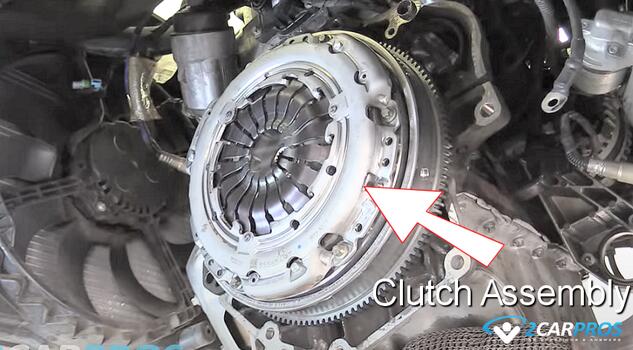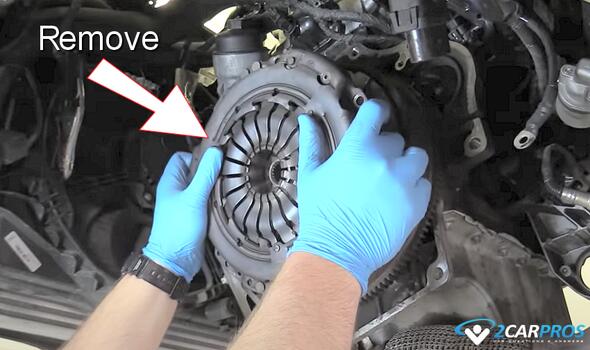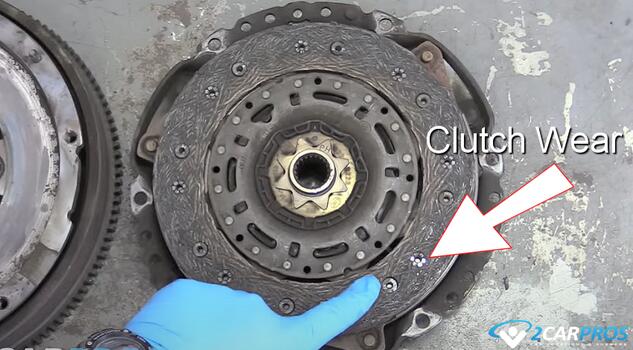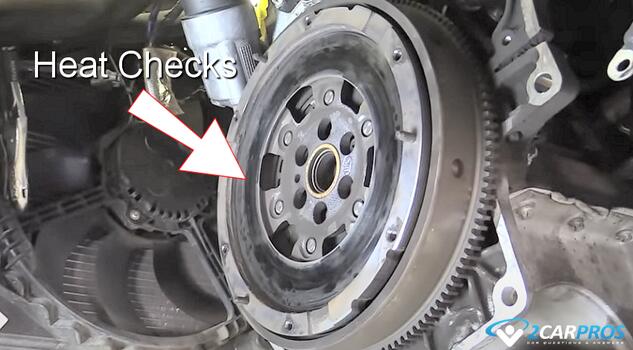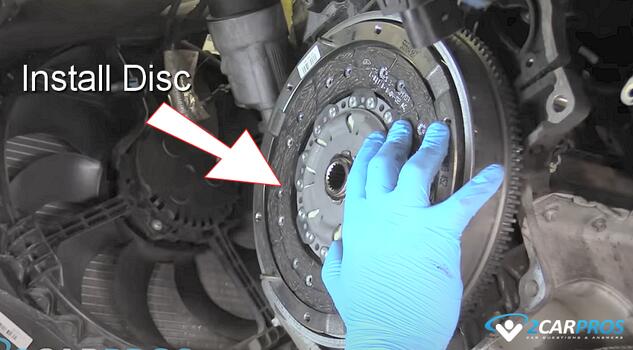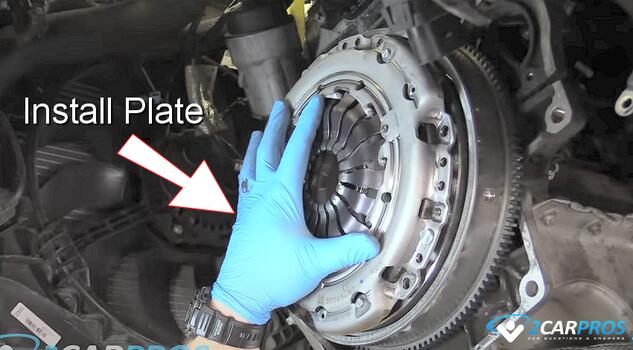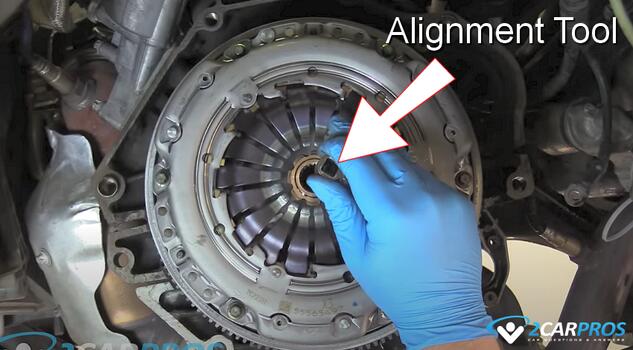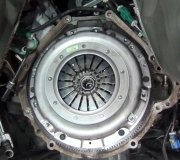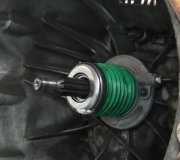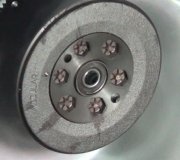Introduction
Before you replace your clutch its a good idea to see how the clutch works and the symptoms of a bad clutch. A clutch will have problems and can stop working all together by either slipping, not engaging or not disengaging which is normal when a clutch is going out due to wear or a mechanical failure. This guide will show you a typical clutch replacement, and help you with the little nuances which will give the best results.
Standard Transmission Removal: The transmission will need to be removed before a clutch replacement service can be performed.
WARNING: A clutch is constructed using asbestos so use a mask before removing the clutch disc. Gloves and protective eyewear are a good idea as well.
Tools and Materials Needed
Before starting, gather the following tools and materials:
- Socket set
- Torque wrench
- Jack and jack stands or vehicle lift
- Transmission jack (optional, but recommended)
- Screwdrivers and pliers
- Breaker bar
- Clutch alignment tool (usually comes with a new clutch kit)
- Clutch kit (pressure plate, clutch disc, and release bearing)
- Flywheel (if needed)
- Brake cleaner
- Threadlocker
- Safety gloves and goggles
Clutch Assembly Removal
1. Remove the Clutch Pressure Plate: The picture below shows what it looks like once the transmission has been removed, which exposes the clutch assembly that is mounted onto the flywheel at the rear of the engine. Again, this part deals with asbestos so an air mask is recommended. Begin by loosening the bolts evenly and in a start pattern. The pressure plate will be held onto the flywheel by 10mm 12mm, or 13mm bolts in most cases.
When you start to undo the bolts, the flywheel will want to move and turn the engine over, so you will need to break the bolts loose by applying leverage inward or outward from the flywheel, an electric impact gun also works well for this, or you can hold the front of the crankshaft balancer bolt.
Do not remove all of the bolts at once because the pressure plate traps the clutch disc, which can be heavy and can fall causing an injury. As the last bolts are undone, have an extra hand to control both the pressure plate and disc. The pressure plate will start to move outward from the flywheel as the bolts are undone.
2. Inspect Clutch Wear: The clutch disc is the part that wears down much like a brake pad, in fact the clutch disc has brake pad material on either side of it which is held on by rivets. When this lining wears it allows the rivets to contact the flywheel or pressure plate which causes the clutch to slip.
3. Resurface/Replace Flywheel: You are looking for extreme flywheel heat checks, hot spots and cracks which are a sign the clutch was slipping for a long period of time and will warrant the flywheel's replacement. Some flywheels can be re-machined if the heat damage is not too bad, if this step is skipped when the new clutch is installed you will have a good chance that it will chatter and the job will need to be redone.
4. Replace Pilot Bearing (If Applicable): On rear wheel drive and some front wheel drive cars, the clutch will have a pilot bearing, which is designed to support the transmission input shaft. If this bearing locks up, or becomes worn it will not allow the input shaft to stop turning which will cause the clutch to not disengage. Visit: Pilot Bearing Replacement
5. Match the New Clutch: Place the old clutch next to the new clutch, inspect the diameter of the disc and the surface area of the clutch material. Also, look at the pressure plate height with one next to the other, they should be fairly close. This will present a problem in the operation of the clutch if they are way off, either not releasing or engaging.
Clutch Assembly Installation
Pro Tip 1: Before re-installing the clutch disc back onto the flywheel, fit the disc over the input shaft of the transmission. It should slide onto the shaft with little resistance, this will help avoid a problems when reinstalling the transmission.
Pro Tip 2: Use brake cleaner to remove grease and dirt from the flywheel and pressure plate clutch contact surfaces before installation.
1. Install the New Clutch: This part is very important! The clutch disc can go onto the pressure plate in either direction, but only one direction is correct. The part of the disc that is protruding outward must go toward the pressure plate/transmission or the clutch will not release.
2. Install Clutch Pressure Plate: Gently install the new pressure plate onto the flywheel alignment dowels while holding the disc in place and start the bolts by hand, but do not tighten. This is so you can insert the clutch alignment tool included in the clutch kit. This is needed to line up the clutch disc to the pilot bearing so the transmission can be easily reinstalled.
3. Clutch Alignment Tool: Insert the clutch alignment tool, slightly tighten the pressure plate bolts further to hold the disc in place and move the tool in a circular motion. It will give some resistance in all directions and you want to find a good center point. This means the disc is in the middle of the pressure plate.
4. Tighten Clutch Pressure Plate: Tighten the pressure plate evenly and slowly in a star pattern using a ratchet. Do not tighten any one bolt all at once, and do not use air tools. This will bend the pressure plate and cause the clutch not to disengage.
- Work your way around the pressure plate slowly tightening several times until completely tight. You will notice the fingers of the pressure plate traveling inward as you tighten the bolts.
- You want this progression to be as even as possible. If this step is not done correctly the clutch will not release properly which can cause hard shifting.
- Finish tightening the bolts to factory torque specifications which is usually between 18 and 24 foot pounds. Again the flywheel will try and turn the engine over, so tighten inward.
- Remove the clutch alignment tool and double check the pressure plate bolts.
Replace the throughout bearing and secondary cylinder and then reinstall the transmission and check the transmission fluid level.
5. Clutch Break-in and Adjustment: Once the transmission has been reinstalled, slowly pump the clutch pedal until normal pedal operation is present. Watch and add clutch fluid (brake fluid) in the process. After the repair, start the engine and push the clutch pedal down completely while shifting the transmission through its gears. It's normal for this operation to be a little rough while the clutch is in it's "break in" period. Normal shifting characteristics should return after a few miles.
Conclusion
Replacing an automotive standard transmission clutch is a complex task, but by following these detailed steps, you can successfully complete the job and restore smooth shifting to your vehicle.
Watch the Video!
Please watch this video of the job being done to glean additional helpful information.
Credits
This guide knowledge base was created by the 2CarPros Team, and by Ken Lavacot: Automobile repair shop owner and certified master automobile technician of over 30 years. If you have question or need help please ask one of our experts we are happy to help. Please visit our 2CarPros YouTube Channel for additional car repairs.
